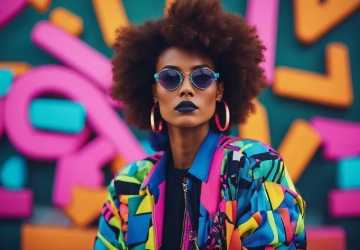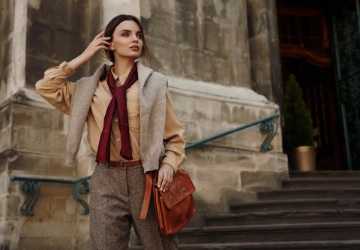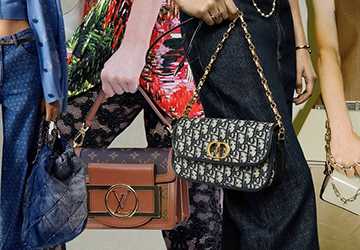Fashion never stands still. It is alive and evolving; it is not stagnant because it continues to adapt and change. And behold, if you peer through the mist of time, you will find that today's trends are merely the echoes of yesterday.
Those are not mere history lessons; one must comprehend these iconic eras. They are a factor that can be used to shape the modern world.
Knowing where trends originated is useful. It may help you guide your style. It allows you to blend the old and the new easily.
This blog post explores four iconic fashion eras and their influence. Read on to discover how these significant periods continue to transform the fashion industry today.
Let's get started!
Why Fashion History Matters
Fashion is much more than just the garments one wears. It reflects society's beliefs, desires, and even its nightmares. Style is always different in every period; each has its history.
By studying these periods, people understand what happened in the past. Socio-historical factors, music, and art are observed to understand how the world interfered with people's clothing. It helps us increase our understanding of present fashion.
It makes it easier to be creative when wearing vintage styles and incorporating modern styles into the arrangement.
Understanding fashion is essential. It aids in improving the designer's buyer's experience and provides the context for your chosen style.

Exploring the Timeless Influence of Iconic Fashion Eras
Fashion is more than just a concept associated with the latest trends. It is a cycle that always turns to the past for its feed. It is now time to explore four epochs of style as we know it. You would be amazed to learn that some are still in our clothing designs today.
So, let's let these cornerstone periods and see what they contributed to the world.
1. The Roaring Twenties (1920s)
The 1920s were the Decade of Change, and fashion was no exception. This era said goodbye to some of the most boring Victorian looks for something that could be described as audacious.
Critical features of 1920s fashion:
● Flapper dresses with loose waists
● Sexy knee-length, which was deemed as scandalous
● Produced designs and patterns in Art Deco style
● Cloche hats and bobbed hairstyles
The period in America referred to as the Jazz Age, was characterized by glamour and rebellion. It was a social reflection of women's granted freedoms; they were free in their clothing.
Today, we see echoes of the '20s ev'20shere:
● Lace and sequins for a contemporary style in celebrating modern party dresses
● Long pearl necklaces, which have vintage looks as their main characteristic,
● These accessories include headbands and hair accessories, worn in the 1920'sy aesthetic in sportswear and daytime looks
The next time you wear a beaded dress or a string of pearls, think about what you are doing—you are living the Roaring Twenties!
2. The Swinging Sixties (1960s)
The '60s wasn't a time of the swinging Sixties—it was the era of the fashion revolutionaries. This decade, all conventions have turned on their heads. It was about the young, their culture, and daring new looks.
Hallmarks of '60s fashion:
● Soft tailoring and body-conscious silhouettes, graphic motifs
● Stilettos and low-high heels
● Dayglo, primary and very intensive colours and shapes
● As influenced by the music industry icons such as the Beatles
The period of the '60s wa'60s era of freedom of speech and style. People used
dressing to support new ideas and movements through their fashion.
We're feeling the '60s vi'60s today:
● Miniskirts continue to be part of the essential clothing collection.
● Graphic and intense makeup connects to the fashion legend of the '60s.
● C'60sea boots and turtlenecks: timelessly stylish
If you fancy yourself a bit of a hippie chick, here are some groovy tips on incorporating a bit of that '60s st'60s into your wardrobe. For example, wear a mini dress with daring tights or round sunglasses!
3. The Disco Era (1970s)
The seventies turned up the volume – in pop and style. It was the period of disco, glam, and hedonism, or, in other words, sexual liberation.
'70s fa'70sn highlights:
● Bell-bottom pants and platform shoes
● Silky and glossy fabrics for nighttime activities
● Large prints such as paisley and floral print
● Shimmer, shiny, and metallic all over
Disco culture determined the decade's appearance. It became all about glittering on the dance floor and being the sparkling star.
The '70s gr'70s is still alive in modern fashion:
● All we can say is, "wide-"g pants, you are back."
● Jum "units are in every wardrobe, whether it is for casual or formal occasions.
● Hippie dresses and clothes of the seventies mainly inspire boho-chic styles.
Ready to boogie? Pull some flares and a silky top; you'll be home in the seventies!
4. The Power Dressing Eighties (1980s)
The '80s were opinionated, flashy, and, more than anything, big. This decade also introduced the concept of 'power 'dressing' and the 'more significant, the better' philosophy.
80s fashion essentials:
● Women'sWomen'sversized blazers that have central shoulder pads
● Neon colours and contrasting patterns of clothing
● Jeans that fit high on the waist and leggings
● Such details include large necklaces, bracelets, rings, bangles, belts, handbags, and shoes.
● Effects from MTV and pop culture idols
Power dressing depicts the increased status of women in the workforce. However, the '80s ha'80s were more than just business – it was a decade of statement.
The '80s or 80's ill shaping today's:
● Big shoulder pads and big collars are back
● Neon colours are visible in luxury and essential wear
● High-waist everything stays in fashion
● Athleisure is, in some ways, a descendant of the exercise clothing of the 1980s
The '80s vi'80s. Why not wear an oversized blazer over the fitted dress or go wild with neon accessories?

Elevate Your Style: Embrace Fashion History
Do not let your clothes become boring. Knowing these styles opens various possibilities for the periods in question.
It is not something that has not been practised today; celebrities today are already incorporating old styles into their outfits.
Start small. Wear one piece from the outrageous vintage style or a piece of jewellery. I must tell you that you will be shocked at how it changes your appearance and with this comes confidence.
Remember, fashion is cyclical. That way, instead of just following trends, you are leading the trends – all by embracing history.
So go ahead and see how you can strike the best bargains with fashion history on your side!



